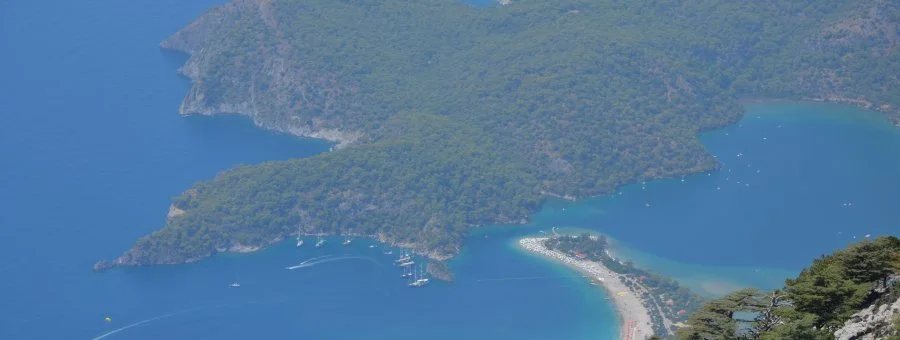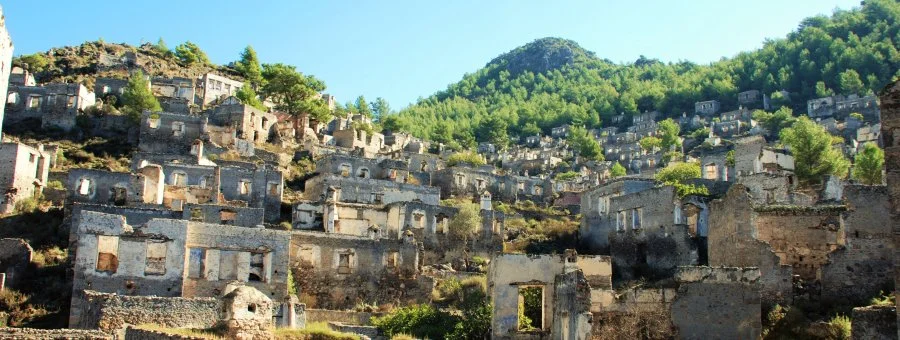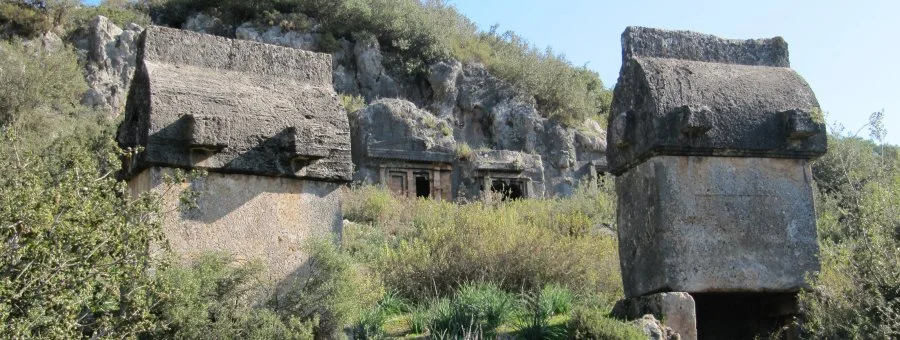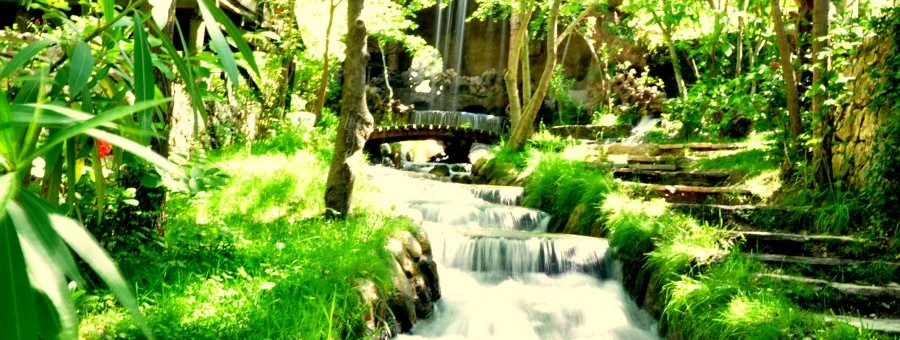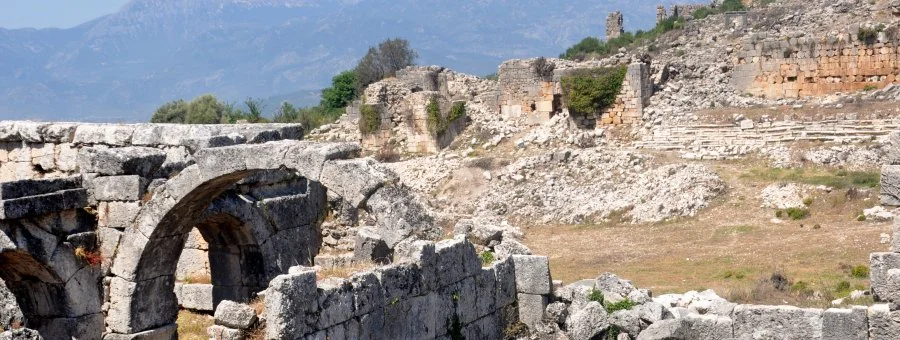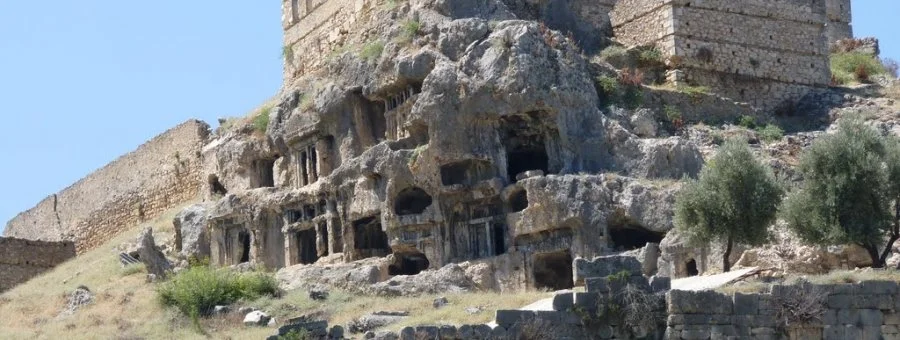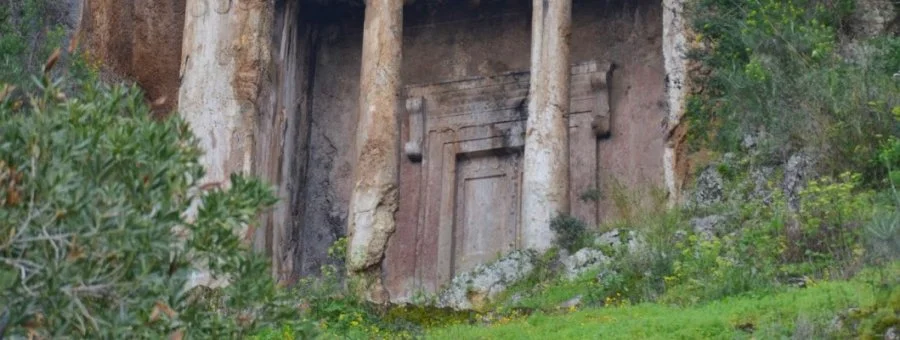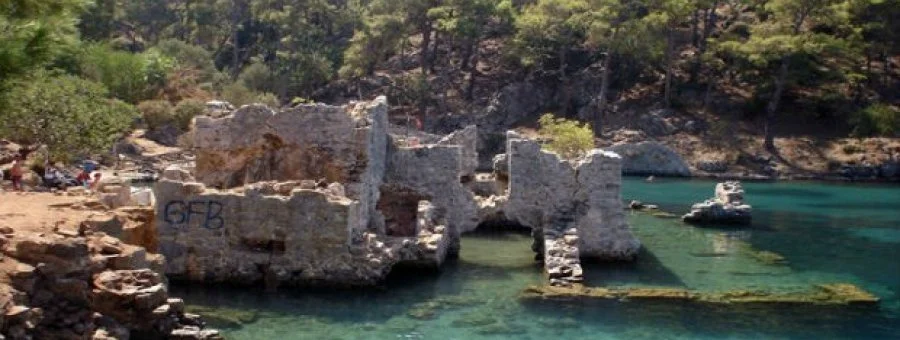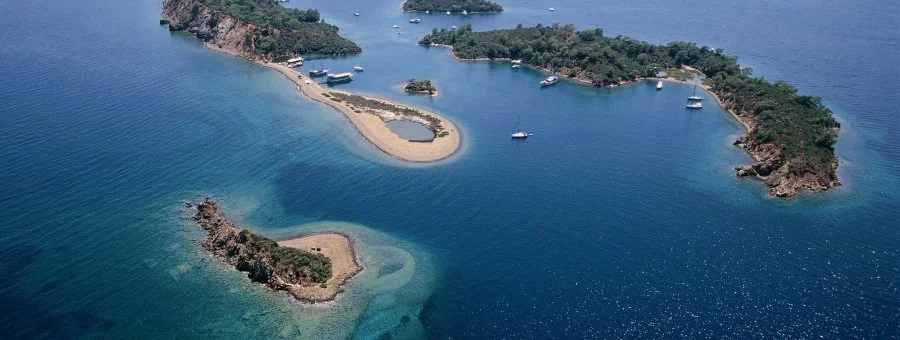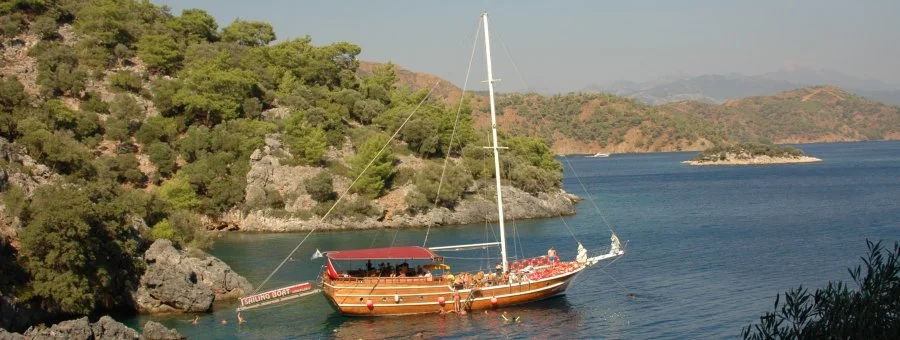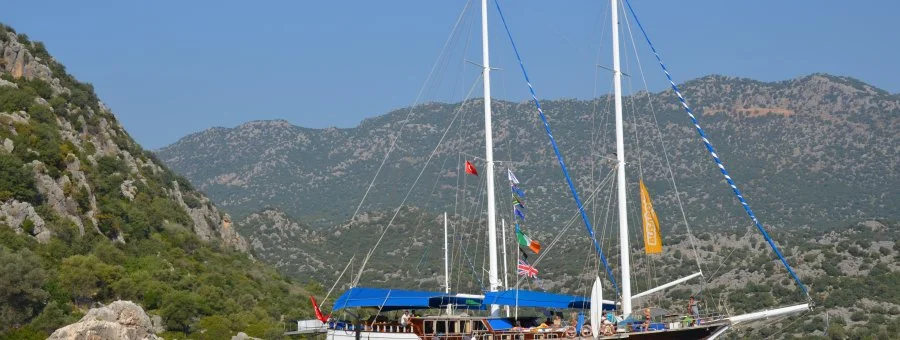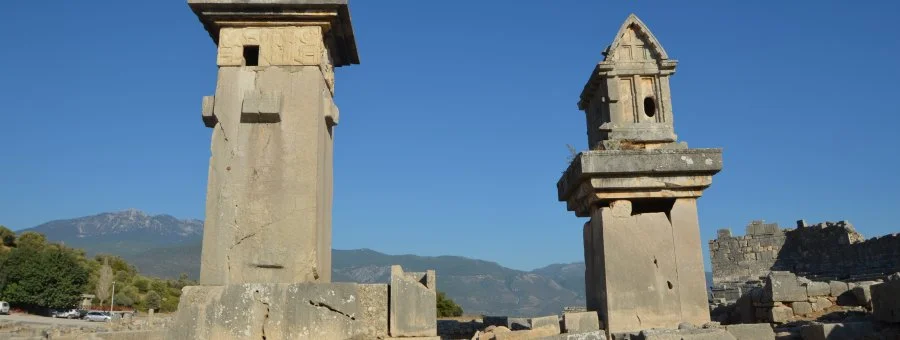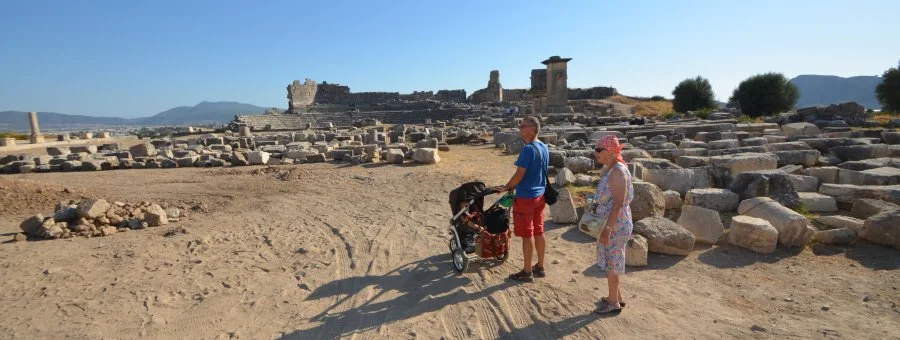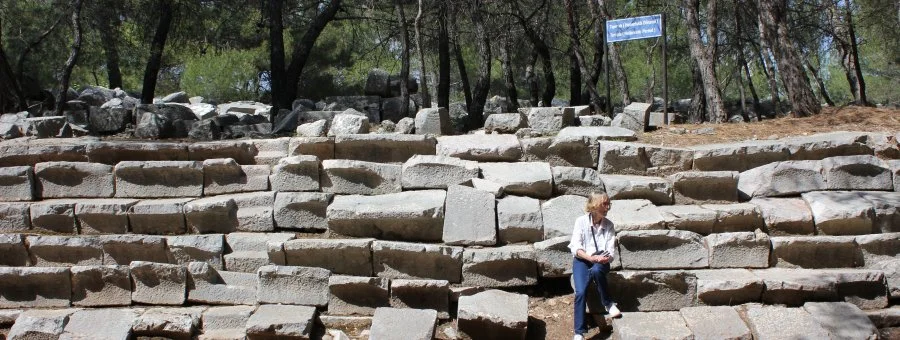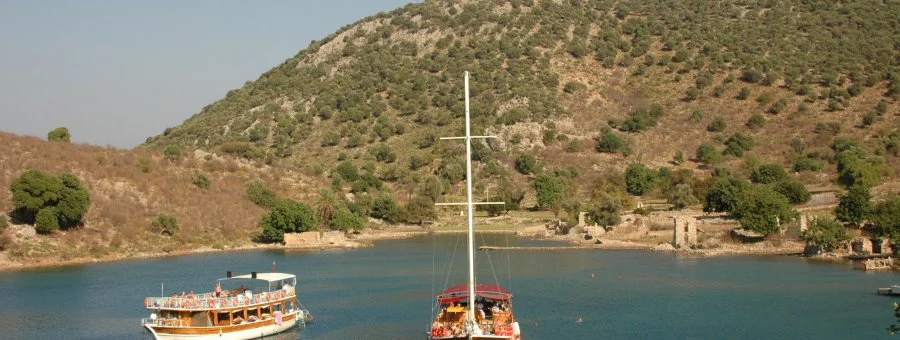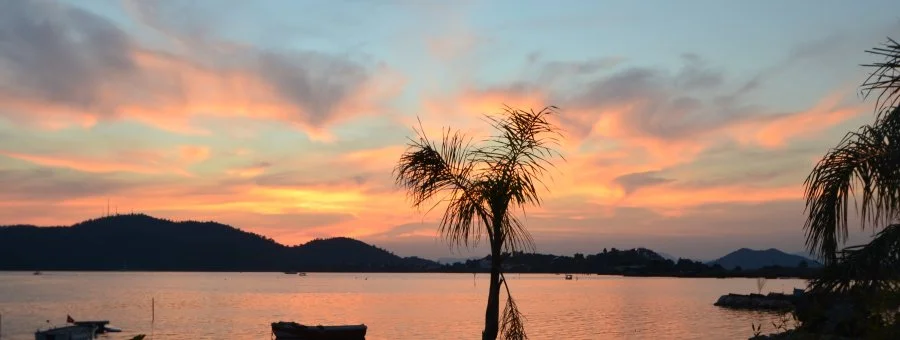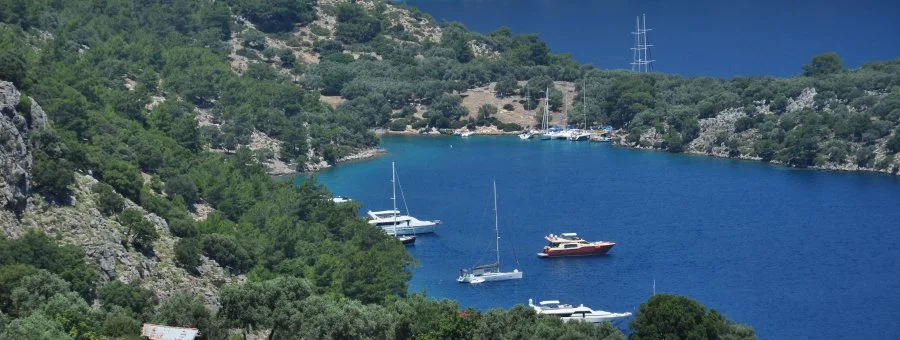Pinara (lykisch: Pilleñni; griechisch: τὰ Πίναρα) – früher Artymnesus oder Artymnesos – war eine große antike Stadt in Lykien (Kleinasien) am Fuße des Berges Cragus und nicht weit vom Westufer des Flusses Xanthos (Xanthus), wo der lykische Held Pandarus verehrt wurde. Der Ort liegt in der Nähe der modernen Stadt Minare in der türkischen Provinz Mugla.
Obwohl die Stadt von antiken Schriftstellern nicht oft erwähnt wird, scheint sie aufgrund ihrer riesigen und wunderschönen Ruinen, wie Strabo behauptet, eine der größten Städte Lykiens gewesen zu sein, die wichtigste Hafenstadt, bis der Hafen versandete und das heutige schilfbewachsene Feuchtgebiet entstand. Laut der lykischen Geschichte des Menekrates, die Stephanus von Byzanz zitiert, war die Stadt eine Kolonie von Xanthos und trug ursprünglich den Namen Artymnesos, der später in Pinara geändert wurde, was in der lykischen Sprache einen runden Hügel bedeutet, da die Stadt auf einer solchen Anhöhe liegt. Ihre Ruinen wurden von Sir Charles Fellows in der Nähe des modernen Dorfes Minare (Minara) entdeckt. Aus der Mitte der antiken Stadt, so sagt er, erhebt sich eine einzigartige runde Felsklippe (die Pinara der Lykier), die buchstäblich überall mit Gräbern übersät ist. Unter dieser Klippe liegen die Ruinen der ausgedehnten und prächtigen Stadt. Das Theater ist in einem sehr perfekten Zustand; alle Sitze sind noch vorhanden, mit den schrägen Seiten zum Proszenium, sowie mehrere seiner Eingänge. Die Wände und mehrere der Gebäude bestehen aus zyklopischem Mauerwerk, mit massiven Toren aus drei riesigen Steinen. Die Gräber sind zahllos und die Inschriften sind in lykischen Schriftzeichen verfasst, aber auf denselben Gräbern sind oft auch griechische Schriftzeichen zu finden. Einige dieser Felsengräber sind mit schönen und reichen Skulpturen geschmückt.
Pinara war Mitglied des Lykischen Bundes, in dem es drei Stimmen hatte. Pinara ergab sich 334 v. Chr. Alexander dem Großen. Nach Alexanders Tod fiel die Stadt an das Königreich Pergamon. Pinara wurde eine römische Stadt, als Pergamon 133 v. Chr. von seinem letzten König Attalus III. der Römischen Republik überlassen wurde. Die Stadt erlebte während der römischen Herrschaft einen Wohlstand, wurde jedoch 141 n. Chr. und 240 n. Chr. durch Erdbeben schwer beschädigt.
Pinara wurde früh christianisiert. Es sind fünf Bischöfe bekannt: Eustathius, der 359 auf dem Konzil von Seleukia die Formel von Acacius von Cäsarea unterzeichnete; Heliodor, der den Brief der Bischöfe von Lykien an Kaiser Leo I. den Thraker unterzeichnete (458); Zenas, anwesend beim Trullan-Konzil (692); Theodor, beim Zweiten Konzil von Nicäa (787); Athanasius, bei der Synode, die 879 Patriarch Photius I. von Konstantinopel wieder einsetzte (das Photian-Konzil). Pinara war der Geburtsort von Nikolaus von Myra. Unter wiederholtem Druck durch Invasionstruppen wurde die Stadt im 9. Jahrhundert unbewohnt.
Es bleibt ein Titularsitz der römisch-katholischen Kirche, Pinarensis; der Sitz ist seit dem Tod des letzten Bischofs im Jahr 1974 vakant.
